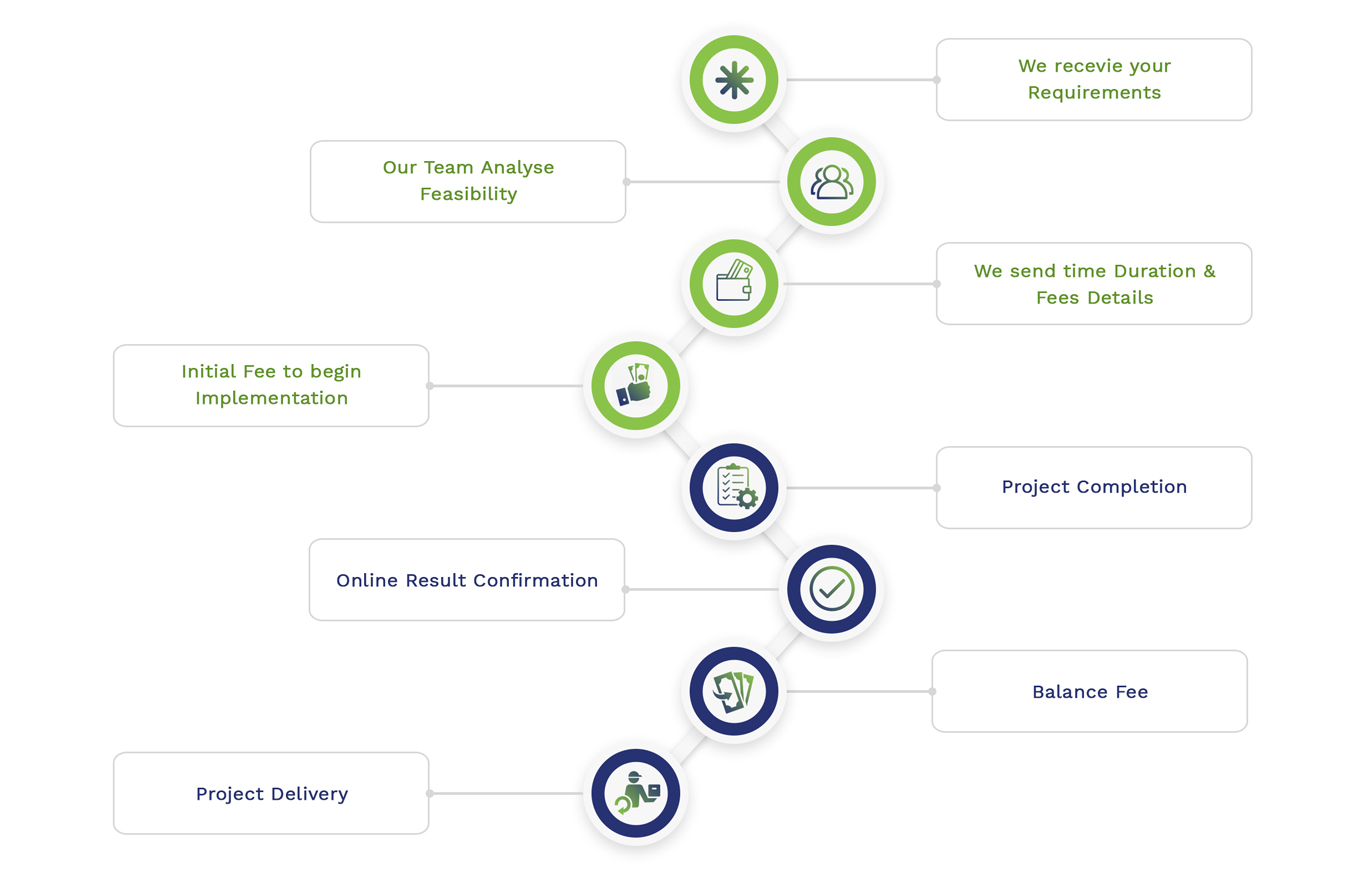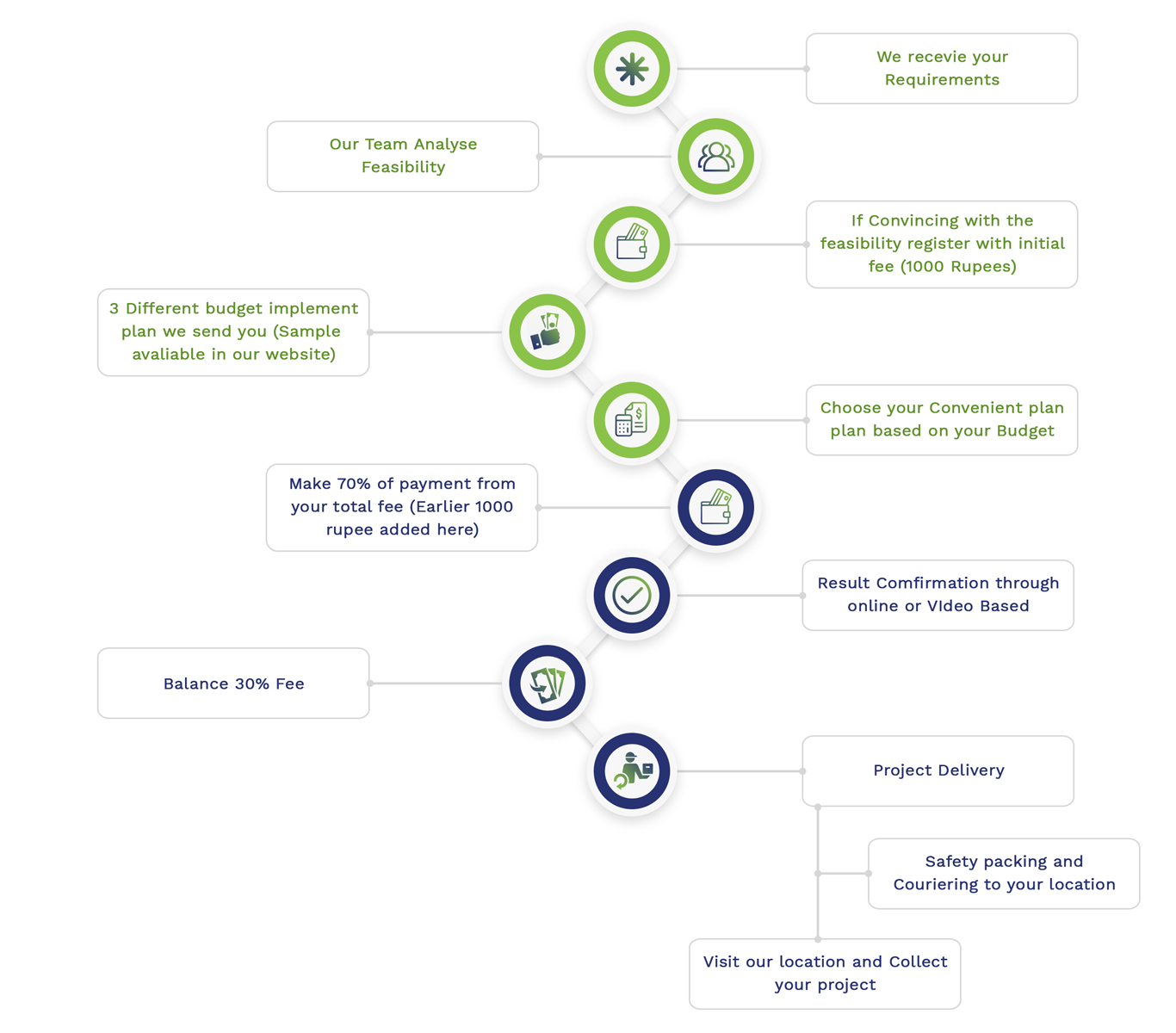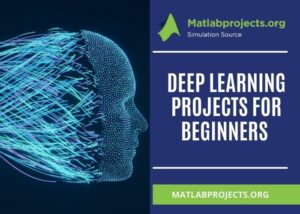In general, the deep learning method is defined as a layered approach that works based on the artificial neural networks process. It acts as the intersection point of machine learning and deep neural networks. For instance: deep reinforcement learning. It has the intention of recognizing and learning patterns in an automated way to take effective decisions like human brain functions.
This article motivates beginners to do the best deep learning projects for beginners by revealing a significant research perspective of deep learning techniques!!!
Specifically, the neural network is the group of neurons that process artificially. It analyses and interprets the sensory data from the machine’s point of view. Then, it states and classifies the raw input data after a certain process and validation. The recognized patterns are in the mathematical format in the form of vectors. And, it can process any type of real-time data like sound, image, video, time-series, etc.
How does deep learning work for real-time applications?
Due to its beneficial impact in real-world scenarios, it is evolving fast in the field of machine learning (ML). And, it also accepts the large dataset despite its complexity. Overall, we can study the neural network topology, prepare a dataset, detect patterns and assess accuracy in an automated way. Further, our technical legends also guide you in defining important deep learning to physical models for detailed generalization. Since our research and development, teams will give strong scientific support in developing deep learning projects for beginners.
For illustration purposes, here we have shown you the widely used deep learning techniques for some primary processes. In this, the target recognition is dependent on the deep architecture, and event recognition is dependent on networks and representation.
Latest Applications using Deep Learning
- Target recognition – ResNeXts, Inception Nets, Sqeeze and Excitation Networks, etc.
- Target detection – Fast R-CNN, Mask-RCNN, YOLO, Faster R-CNN, etc.
- Image denoising – ResNets, CNN, FDDNets, DnCNN and etc.
- Event recognition – Temporal Segment Networks, Semantic Image Networks, Dynamic Image Networks, etc.
What is a unique feature of deep learning?
As mentioned earlier, deep learning is a layered approach and further extends with other significant machine learning methods. To combine with machine learning techniques, it creates complex links among learned parameters and non-linear functions. So, it can hold hands with sort of functions in an effective way. And, once can posturize both structured and unstructured data using the representation learning method. Below, we have highlighted some key characteristics of deep learning that made this field more popular among research scholars. Some of the significant features are as follows.
- Flexible to create more layers
- Ability to support more resources
- Capable to configure the network in sparsity
- Able to set and optimize Hyper-parameters
- Proficient in pre-train input data in an unsupervised manner using supervised classification
- Support different hidden layer and hierarchical feature extraction in multi-layers
In addition, we have included other three important features of deep learning for implementation. In this, we have considered the real-time scenarios as proving learning content for learners where the results are majorly dependent on the learner’s ability, behavior, requirements, affective condition, etc. This helps you to understand how the adaptive data are generated, sequenced, and assessed, deep learning projects for beginners. Similarly, we also help you in other methods of deep learning based on key features of techniques. Further, we determined some of the unique features of deep learning,
- Adaptive Data
- Provide customized content which depends on learners skills, behaviors, and requirements
- Adaptive Evaluation
- Provide personalized tests which depend on learners past performance evaluation
- Adaptive Series
- Provide automated series of learning which depends on learners skills and effective condition
Next, we can see that the flow of the deep algorithm from data collection to assessment. Here, we have given you a general purpose of the deep learning algorithm. Further, these steps may vary based on handpicked deep learning techniques. Similarly, we have also given you the implementation plan for your handpicked project topic. We hope that now you understand how the input data are trained and tested for achieving expected results.
What is the Flow of Deep Learning Algorithms?
- Step 1 – Gather or Generate named data
- Step 2 – Perform preprocessing for cleaning data
- Step 3 – Choose the appropriate algorithm
- Step 4 – Train the data by preprocessing and training methods like feature extraction
- Step 5 – Validate the trained data by setting hyperparameters and feature adjustments using refine the model
- Step 6 – Evaluate the final model with the test set
- Step 7 – Forecast the new data
In addition, we have also given the primary principles of deep learning. Through this, you can identify the objectives and unique aspects of deep learning from other standard techniques. By using deep learning, one can accomplish the key requirements of automated models and learn for decisions. We ensure you that our proposed techniques and algorithms surely meet your project expectation. Since we have default constraints to choosing modern technologies for solving upgraded research issues.
What are the principles of Deep Learning?
- Enhance the training performance
- Efficiently extract the features from unlabeled data
- Employs Multi-layered neural network approach
- Minimize the local minima issue
For illustration purposes, here we have taken “Multi-layer neural networks” as an example. Utilizing more than two hidden layers may increase the fading impacts. Since the first layer is placed far away from the output layer which is subjected to initial random settings. Our developers have so many solutions for these hidden layer problems. And, one of our solutions is given as follows,
- Input – Initial train network
- Inputs
- 1 hidden layer
- 1 output with the same number of nodes on input
- Objective – Need to attain the following in hidden layer
- Minimum nodes in/out layers
- If sparse, then the nodes need to achieve an output of 0 or >0.05(rare cases)
- Proposed Solution
- Autoencoder
- Generalize the unlabeled input and reconstruct them accordingly
- Stack the autoencoders
- Outcome – Final network
- Input layer
- 1st autoencoder layer
- 2nd autoencoder layer
- Output Layer
When you have more labeled data then you can modify this network. For that, you can utilize autoencoders layers as the first generation of neural network and next execute the different generations of backpropagation. Here, we have given you the limitation of deep learning that is currently looking forward to the best solutions. All these limitations are collected from our updated latest research issues repository. And also, we have found optimal technologies to crack all these issues. Further, we also support you in other research challenges by providing appropriate solving techniques.
Limitations of Deep Learning
- Local and Extreme Generalization
- In extreme generalization, generalization is based on reasoning and abstraction
- Follows never-before-experienced state
- In local generalization, generalization is based on pattern recognition
- Follow mapping between input and output
- High Processing and Financial Resources
- In the case of limited GPUs and CPUs, then it will more time for processing
- Particularly, if the input is large then it takes even more time
- Large Datasets
- Mainly, it requires a massive amount of data as input
- So, it is better to segment and measure data with high accuracy
- If the data with low quality or low volume then the accuracy may decrease
- Other Limitations
- Statistical Reasoning and Interpretability
To collect novel deep learning projects for beginners, our resource team gathers all recent research updates of supervised learning, big data representation, artificial intelligence programming, machine learning, artificial neural networks, unsupervised learning, etc. We assure you that our experts suggest innovative computational frameworks where AI unties the relation between the human brain (memory) and perception. Further, we also design and develop new clustering methods, classification techniques, CNN models, etc. Besides, we also listed some deep learning techniques along with research issues and solutions.
Latest Deep Learning Techniques
- CNN-based Models
- Issues
- Utilize large-set of samples
- Minimum computing process
- Utilize only a few metrics
- Outcomes
- Achieve pixel to pixel reasoning
- Lack of efficiency in constant result
- Fails to consider nearby pixel correlation
- Not well suited for complex positions
- DCN-based Models
- Issues
- Need more time for computation and training
- Need more storage and memory space
- Outcomes
- Achieve fault tolerance and efficiency for a reliable result
- Maximum spatial accuracy
- GAN-based Models
- Issues
- Complication in training
- No support of huge data
- Outcomes
- Give constant result
- Fault-tolerant and efficient
- FCN-based Models
- Issues
- Dependent on training masks and images
- Lack of Adaptability in complicated data
- Outcomes
- Low position precision
- Connectivity problems
- Improper spatial consistency
Now, we can see the current research topics for deep learning projects for beginners. Deep Learning Capstone Project ideas are collected from current research areas of deep learning. Since, deep learning is a technique that can use in several research fields like cloud computing, big data analytics, artificial intelligence, computer vision, image processing, data mining thesis topics, etc. Our resource team has well-equipped knowledge in all these fields to support your deep learning projects in desired research area/field. Once you make a contact with us, we let you know interesting deep learning topics in your interested areas. Further, we also provide technical guidance Master thesis NLP on your own desired ideas.
Research Areas in deep learning
- Learning based Data Mining in Warehouse
- Image Detection and Segmentation
- Network Intrusion Detection and Prevention
- Large Data Processing and Visualization
- Image Processing and Steganography
- Data Amplification using Transfer Learning Method
- Sentiment Analysis and Translation in NLP
- Systematic Speech Recognition and Synthesis
- Advanced Deep Learning Mechanisms
How is deep learning accuracy calculated?
The four primary factors used for assessing deep learning models are precision, matrix, recall, and accuracy. For example, object detection is one of the major problems in computer vision. Since it needs to locate multiple objects in an image where the conventional methods are not appropriate to locate the objects. When an enhanced deep learning model is used, it accurately returns the coordinates of each recognized object in an input image. For instance: YOLO and R-CNN. Also, it enables to detection of objects in different patterns and features. In particular, we assess the performance of models by the followings,
- Accuracy
- Precision
- Recall
- Confusion Matrix
- Multi-Class Classification
- Binary Classification
- Confusion Matrix Computation (using Scikit-learn)
Most importantly, the confusion matrix is determined by the below specified four main parameters as true negative, true positive, false negative, and false positive. Let’s see exactly what these parameters mean:
- True Negative – correctly recognize Negative instance as Negative
- True Positive – correctly recognize Positive instance as Positive
- False Negative – wrongly recognize Positive instance as Negative
- False Positive – wrongly recognize Negative instance as Positive
If you are new to research, then no problem we will take you from beginner to expert through our keen assistance. Overall, we support you in all phases of your research journey starting from the day you wish to research until thesis/dissertation submission. Therefore, create a bond with us to reach your final year project/research ambition. Our expert panel team will guide you to develop deep learning projects for beginners with source code implementation. Get to know about interesting facts on deep learning.
Subscribe Our Youtube Channel
You can Watch all Subjects Matlab & Simulink latest Innovative Project Results
Our services
We want to support Uncompromise Matlab service for all your Requirements Our Reseachers and Technical team keep update the technology for all subjects ,We assure We Meet out Your Needs.
Our Services
- Matlab Research Paper Help
- Matlab assignment help
- Matlab Project Help
- Matlab Homework Help
- Simulink assignment help
- Simulink Project Help
- Simulink Homework Help
- Matlab Research Paper Help
- NS3 Research Paper Help
- Omnet++ Research Paper Help
Our Benefits
- Customised Matlab Assignments
- Global Assignment Knowledge
- Best Assignment Writers
- Certified Matlab Trainers
- Experienced Matlab Developers
- Over 400k+ Satisfied Students
- Ontime support
- Best Price Guarantee
- Plagiarism Free Work
- Correct Citations
Expert Matlab services just 1-click

Delivery Materials
Unlimited support we offer you
For better understanding purpose we provide following Materials for all Kind of Research & Assignment & Homework service.
 Programs
Programs Designs
Designs Simulations
Simulations Results
Results Graphs
Graphs Result snapshot
Result snapshot Video Tutorial
Video Tutorial Instructions Profile
Instructions Profile  Sofware Install Guide
Sofware Install Guide Execution Guidance
Execution Guidance  Explanations
Explanations Implement Plan
Implement Plan
Matlab Projects
Matlab projects innovators has laid our steps in all dimension related to math works.Our concern support matlab projects for more than 10 years.Many Research scholars are benefited by our matlab projects service.We are trusted institution who supplies matlab projects for many universities and colleges.
Reasons to choose Matlab Projects .org???
Our Service are widely utilized by Research centers.More than 5000+ Projects & Thesis has been provided by us to Students & Research Scholars. All current mathworks software versions are being updated by us.
Our concern has provided the required solution for all the above mention technical problems required by clients with best Customer Support.
- Novel Idea
- Ontime Delivery
- Best Prices
- Unique Work
Simulation Projects Workflow

Embedded Projects Workflow



 Matlab
Matlab Simulink
Simulink NS3
NS3 OMNET++
OMNET++ COOJA
COOJA CONTIKI OS
CONTIKI OS NS2
NS2







